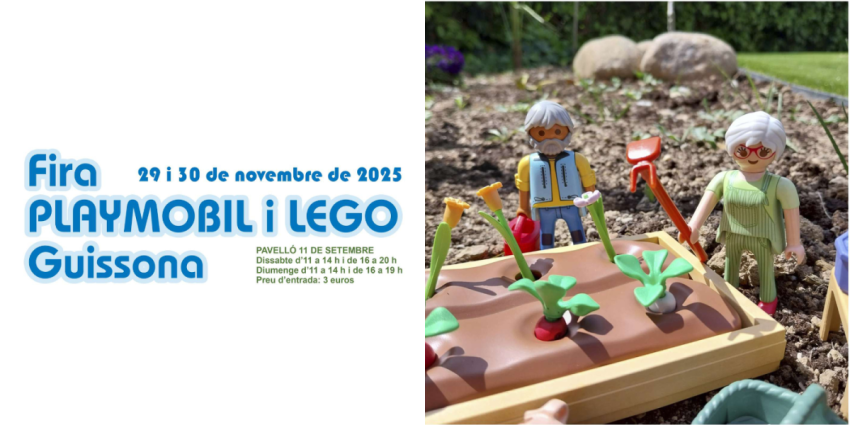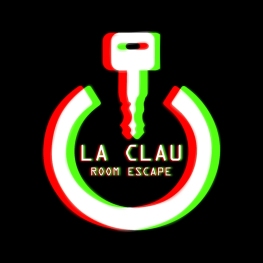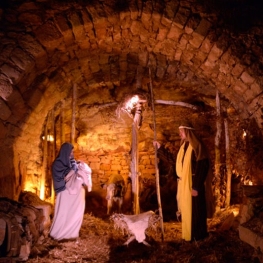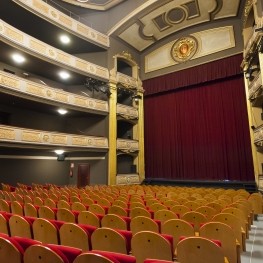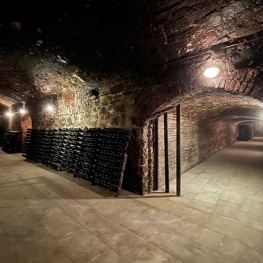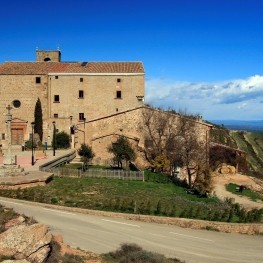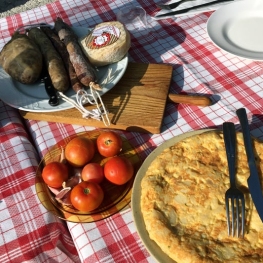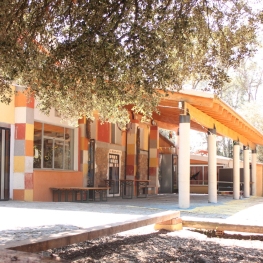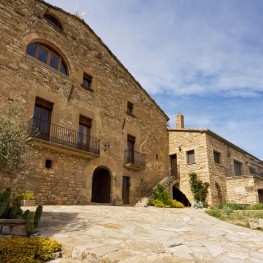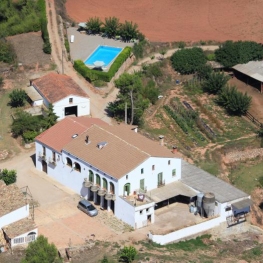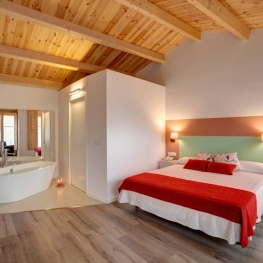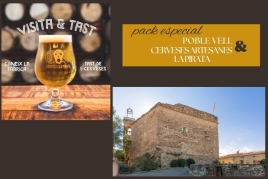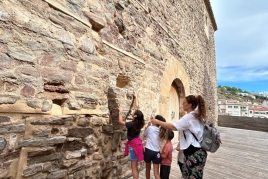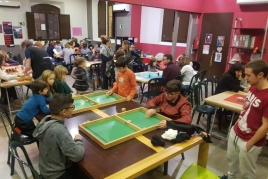Route through the Torres de Fals in Fonollosa
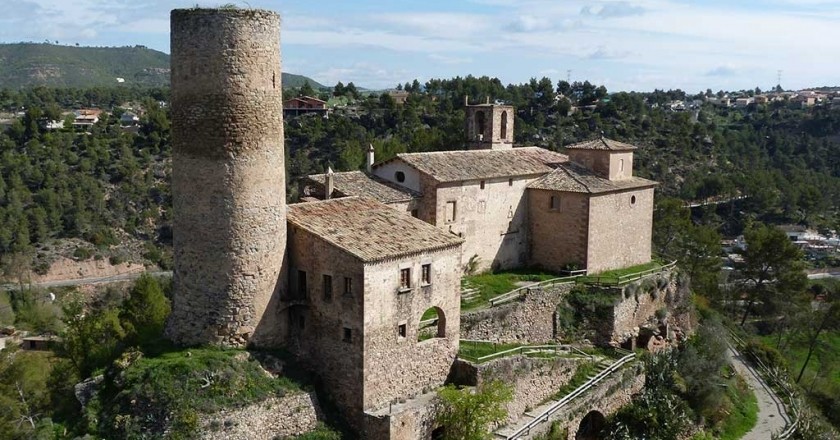
We propose a visit to the towers of Fals, in Fonollosa, a set of buildings for defense made up of two cylindrical towers raised on two nearby hills, in the middle of which runs the Fonollosa stream, which empties into the stream Name.
We started!
One of the towers is part of a more complex architectural complex, since taking advantage of the crest of the hill, a house with a ground floor and first floor is attached to it in the eastern direction, through which access to the tower, the rectory of the church of San Vicente de Fals, the church of San Vicente de Fals, and at the end, a few meters away, the parish cemetery.
The set of buildings known by the name of Castillo de Fals, does not respond to the usual defense system of the rest of the castles, since there are two towers well separated from each other, one in charge of defending the set of buildings that surround the church and a second support tower to defend the place.
The sunken position of the castle makes it necessary to build a third watchtower, which remains practically intact, attached to the Mas de la Torre Sagimona, in the middle of the fields of Fals. As an element of the castle belonging to the high Middle Ages, the circular tower located at the top of the hill that dominates the confluence of a stream with the Fonollosa stream is preserved .
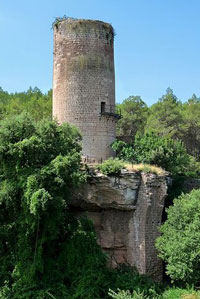 The tower presents a deformation that will remain throughout its entire height, starting from its base (very irregular), and taking a really circular shape from three meters high. The building was settled directly on the natural rock; it takes an outer diameter of 9 m and a height of approximately 19.50 m. It has a small base made with unworked stones of large sizes (they reach 90 x 95 cm on the outside), tied with a mortar with a high lime content, very typical of constructions around the year 1000.
The tower presents a deformation that will remain throughout its entire height, starting from its base (very irregular), and taking a really circular shape from three meters high. The building was settled directly on the natural rock; it takes an outer diameter of 9 m and a height of approximately 19.50 m. It has a small base made with unworked stones of large sizes (they reach 90 x 95 cm on the outside), tied with a mortar with a high lime content, very typical of constructions around the year 1000.
In some sections of the outer part the plaster that covered the walls can still be seen. The size of the stones decreases as the tower gets taller, especially from 5 m. In the last 6 m, the ashlars are clearly worked, being much more regular, which indicates a later extension to their original construction, which initially would have been 16 m high. The second tower was built at midday from the first, to which it gave protection.
It has a circular plan, but in this case already from its base. With an external diameter of 9 m and internal diameter of 4 m (both constant), the tower rises to 17.20 m, being divided into three levels (ground floor plus two floors) and a roof terrace at the top. Each of the levels is divided by a ledge-shaped projection, and the distance between them is 5 m. The door, located in the northwestern part, opens about 7 m from the exterior floor, and 5.5 m from the interior, at the height of the first floor.
It is a rectangular door (150 x 82 cm), with a large monolithic lintel block. At the foot of the door there should be a small wooden platform with an upper roof also made of wood, this fact would be plausible due to the existence of two quadrangular holes next to the lintel and the feet of the door that would have been used to insert - beams. The structure of the building was built with very well worked and confronted stone blocks, arranged in horizontal courses and placed in trencajunts. The blocks of the base have considerable measurements (39 x 107 cm; 39 x 65 cm; 39 x 86 cm;..), decreasing in size as the tower gains height. The link of the tower is made from a mixture of sand and lime, very compact and of a grayish tone. From a distance the tower takes on different shades according to its constructive apparatus, grayish in the lower part, intense reddish in its central part, and again dark gray in the upper part. Along the central and southern part appear a series of square holes and two corbels.
The large number of marks left by the beds stands out: an umbrella, a semicircle with an exceeded radius, a figure similar to a wedge, a rhombus, an incision similar to an A and different types of crosses. A detailed observation of this second tower would reveal how, towards the 13th-14th centuries, it could have suffered serious structural problems, having to reinforce it, covering it with an outer wall, which would enhance the thickness of the wall and result in a lined tower. This aspect is perfectly detected in the upper part of the tower, where you can still see how the tower decreases in diameter and becomes thinner. The entrance door is located in the northwestern part, 8 m above the rock level where it sits; its location is the original one, but over the years different reforms have been carried out, especially in the lintel and uprights. Currently access is from the house next door. The slightly pointed arch above the door looks quite old, although it rests on a lintel that was probably added later.
It is built using a series of vertical slabs. The studs have been altered with respect to the original construction, the measurements of the two are different, and they are not rebuilt with the same type of stone. The lower part of the door was filled with new root stones from some of the reconstructions. It seems that inside the tower there would be two false domes, and that above these there would still be one or two more floors. The set of characteristics that the tower presents, suggests that most of the building was built around the year 1000.
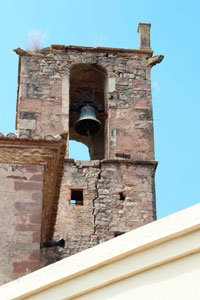 In modern times (19th century) the tower was reinforced again with the construction of a fortified wall that surrounds the entire outer perimeter a few centimeters away, and that served to defend against firearms and artillery. As a result of this last phase, the beginning of a wall is observed that ends up being lost among rubble. Its maximum height is 4.80 m, with a width of 2 m at its base, although the height will vary in order to save the unevenness of the terrain. The openings in the wall are the door at noon (80 cm wide) and 12 loopholes. The stone blocks of the wall, made of quarry, are bound with a mortar like that of the tower, the courses are arranged horizontally and broken together.
In modern times (19th century) the tower was reinforced again with the construction of a fortified wall that surrounds the entire outer perimeter a few centimeters away, and that served to defend against firearms and artillery. As a result of this last phase, the beginning of a wall is observed that ends up being lost among rubble. Its maximum height is 4.80 m, with a width of 2 m at its base, although the height will vary in order to save the unevenness of the terrain. The openings in the wall are the door at noon (80 cm wide) and 12 loopholes. The stone blocks of the wall, made of quarry, are bound with a mortar like that of the tower, the courses are arranged horizontally and broken together.
The defensive system of the castle of Fals has its own characteristics that differentiate it from the rest of the fortifications of the time (X-XI century). The specificity and originality of the Torres del Fals complex lies in the fact that it is not a single isolated tower, but rather forms a complex system of towers - three in particular - that mutually reinforce each other.
These towers, of uncomfortable habitability, had residential tasks, which can vary from strictly military functions - that is, accommodation of the warriors in charge of defense - to becoming, in addition, a residence for the Castilian and his family, warriors, servants and auxiliaries. The living conditions were certainly precarious, to think that the usual dwelling was made in more or less fixed improvised units outside the tower, and that it had a defensive and symbolic functionality. The existence of a system of towers related to each other, a few meters apart, and the presence of a religious element next to it - the church of San Vicente - indicates that perhaps the tower located on the main hill would have residential functions, while the others it would have a military reinforcement and surveillance function.
Text authorship: Antonio Mora Vergés
What to do
La Clau Room Escape: Until Dawn i Game On
Manresa (a 13.3 Km)Find a group of 2 to 6 people and enjoy the puzzles…
Pessebre Vivent de Les Torres de Fals
Fonollosa (a 5.2 Km)The visit to the Nativity scene concludes among shepherds, who offer a…
Where to eat
Hostal de Pinós
Pinós (a 12.7 Km)It is the oldest restaurant in Catalonia that has never closed its…
Restaurant Marisquer Can Ladis
Sant Fruitós de Bages (a 17 Km)The Can Ladis Seafood Restaurant, located in Sant Fruitós de Bages, is…
Hostal de Montclar
Montclar (a 29.3 Km)Located in the town square of Montclar, in the south of Berguedà,…
Where to sleep
Les Corts de Biosca
Sant Mateu de Bages (a 4.8 Km)A well-equipped, comfortable agritourism property with splendid views, just an hour from…
Masia Mas Set-Rengs
Sant Salvador de Guardiola (a 11.7 Km)Discover Mas Set-Rengs and enjoy a farmhouse located in a privileged natural…
Hotel La Freixera
Solsona (a 28.7 Km)Discover Hotel la Freixera, a charming boutique hotel located in the middle…

